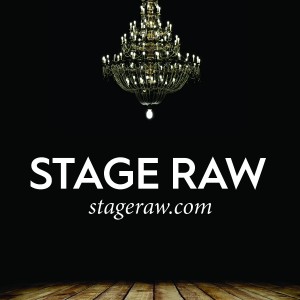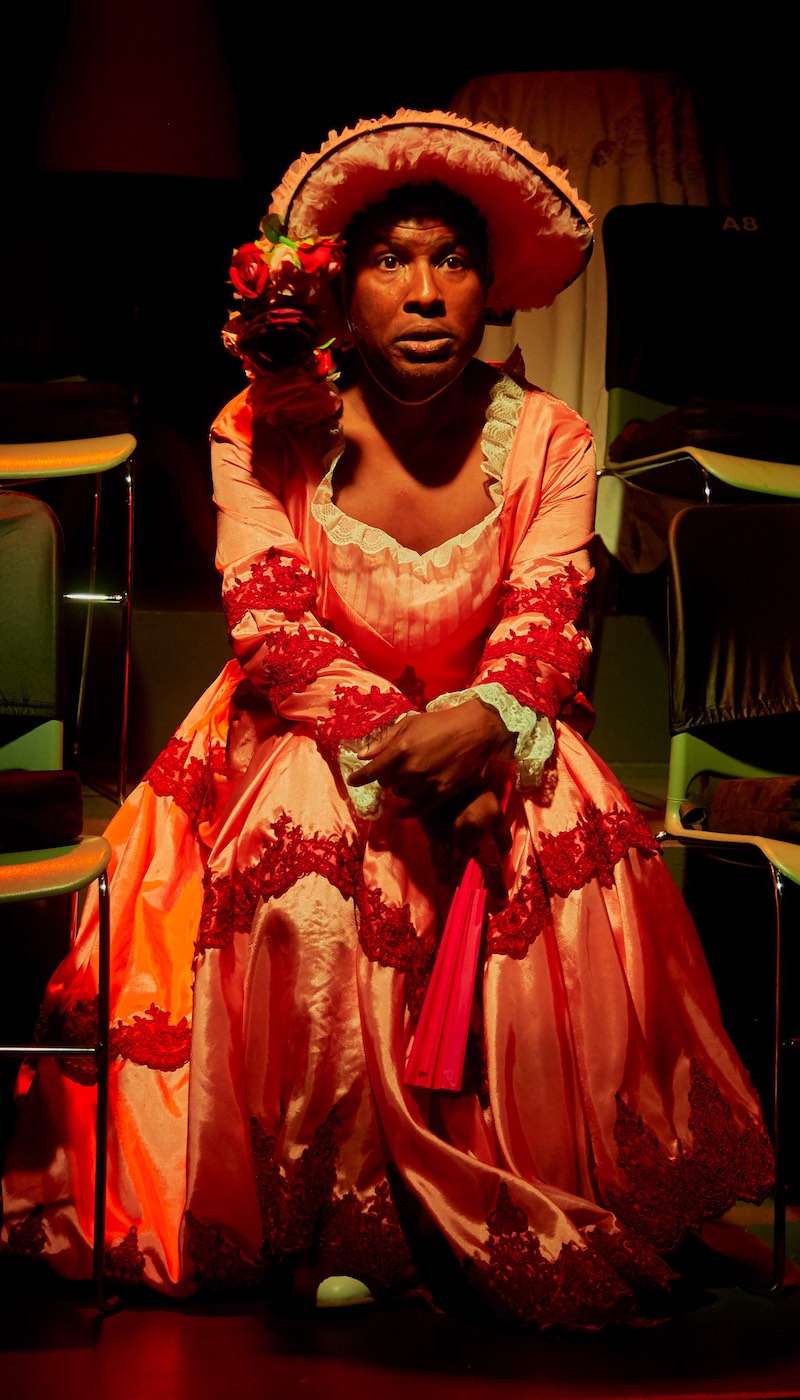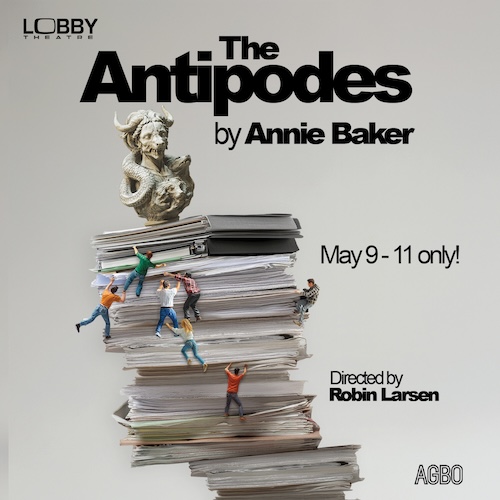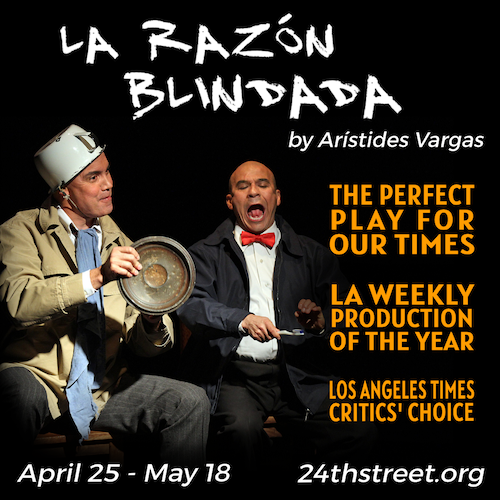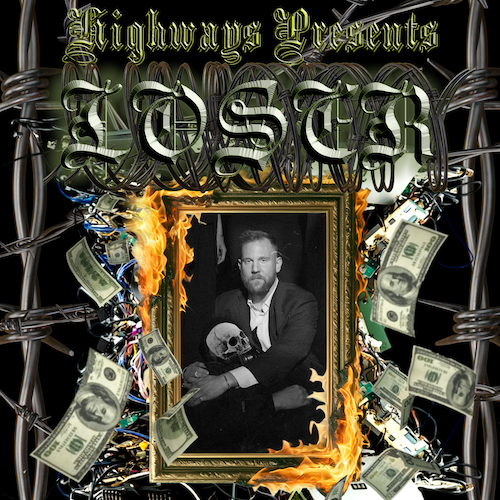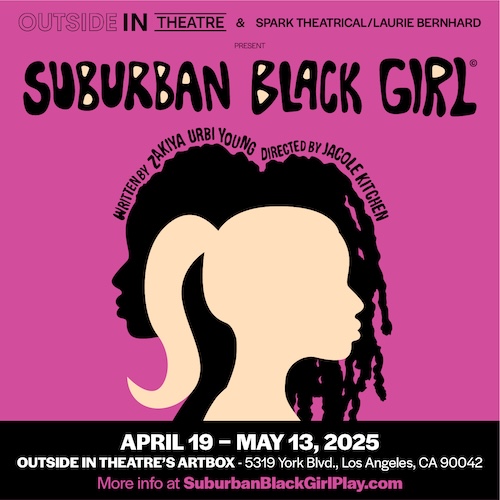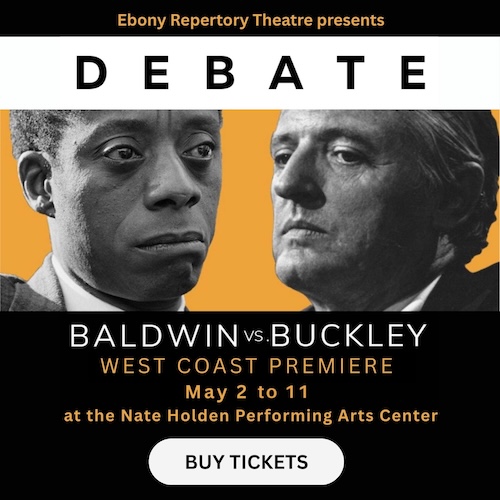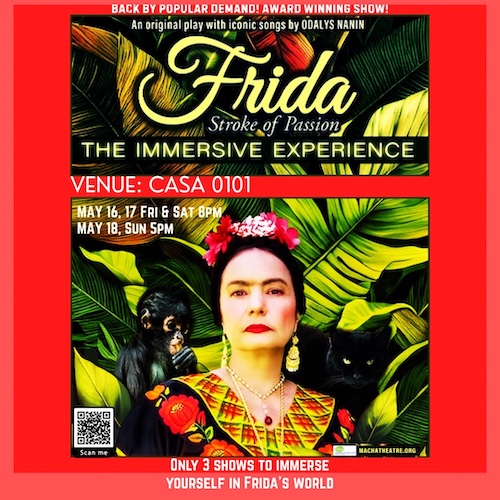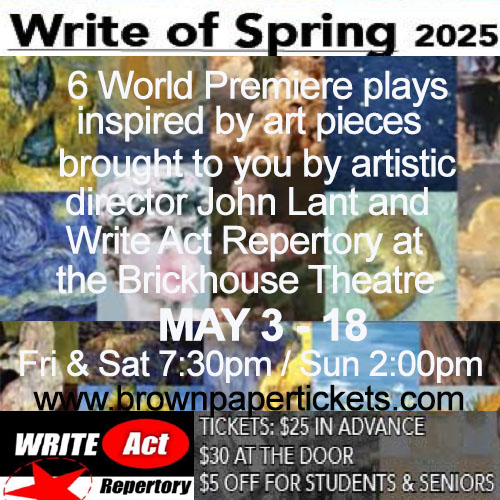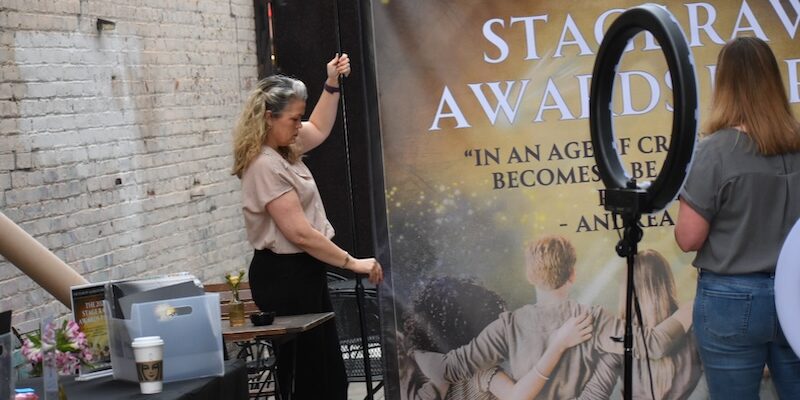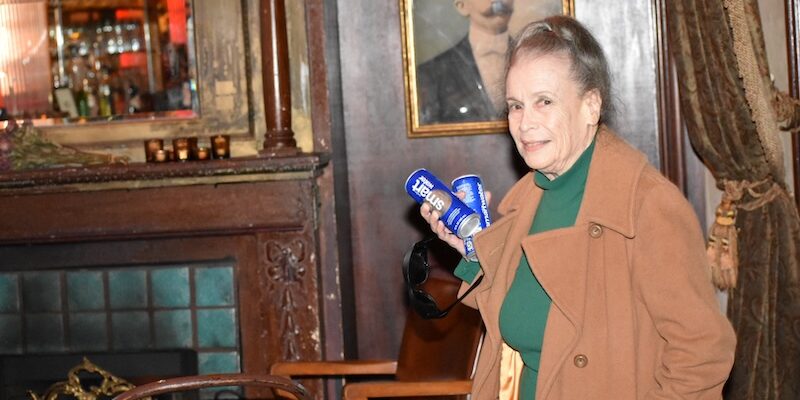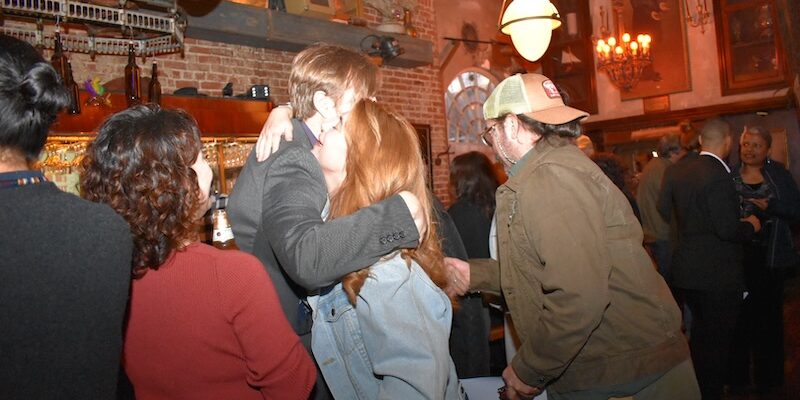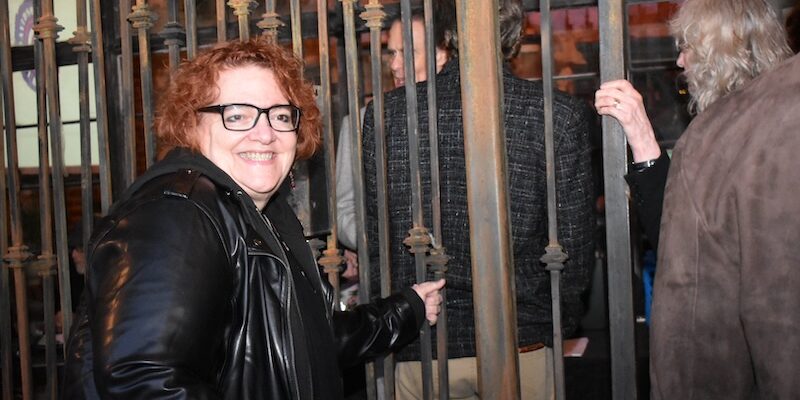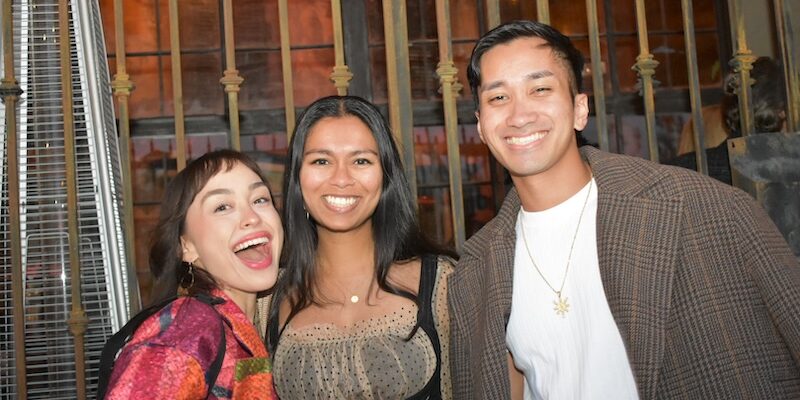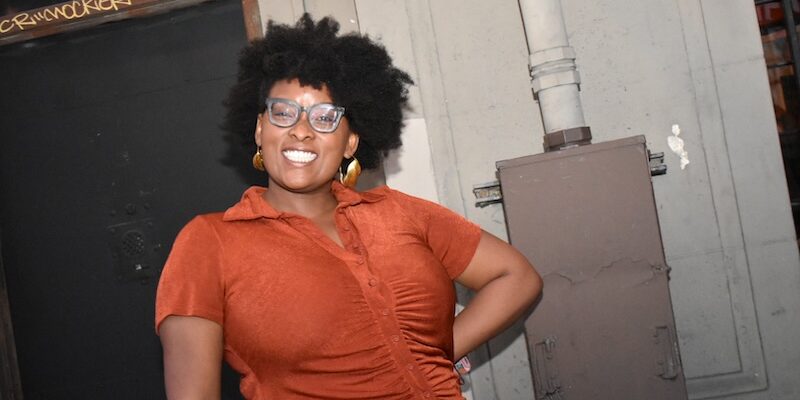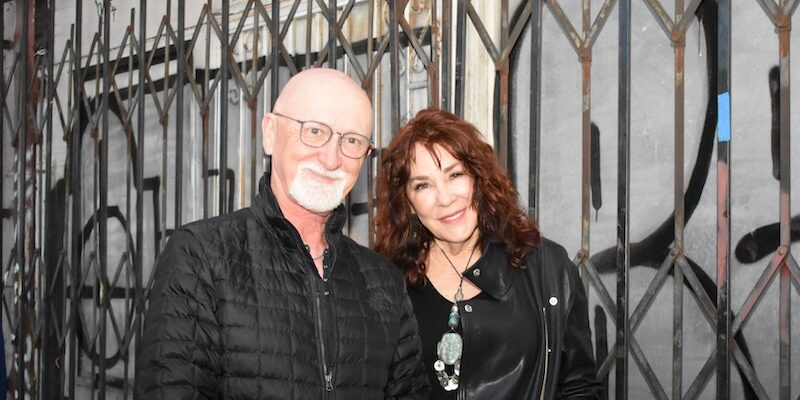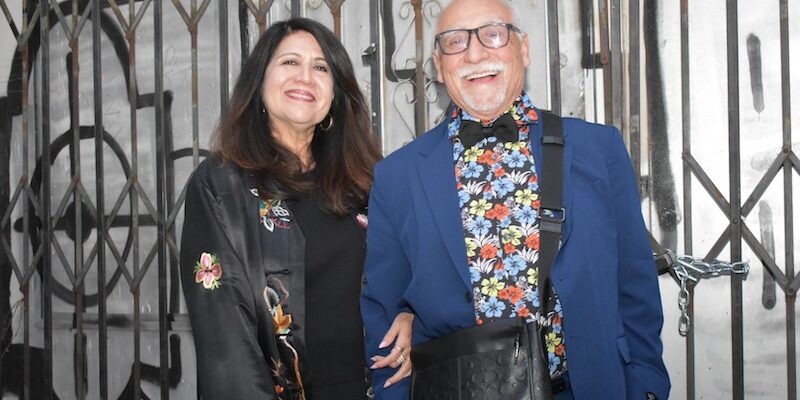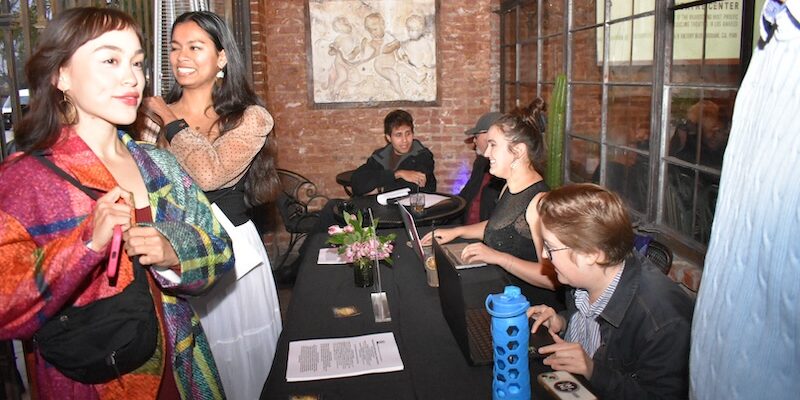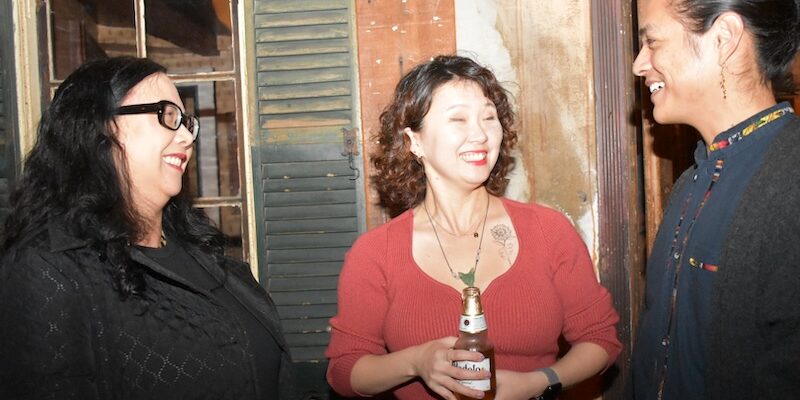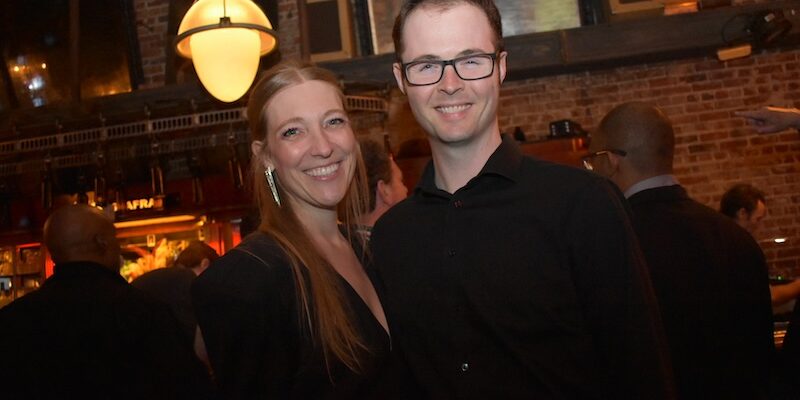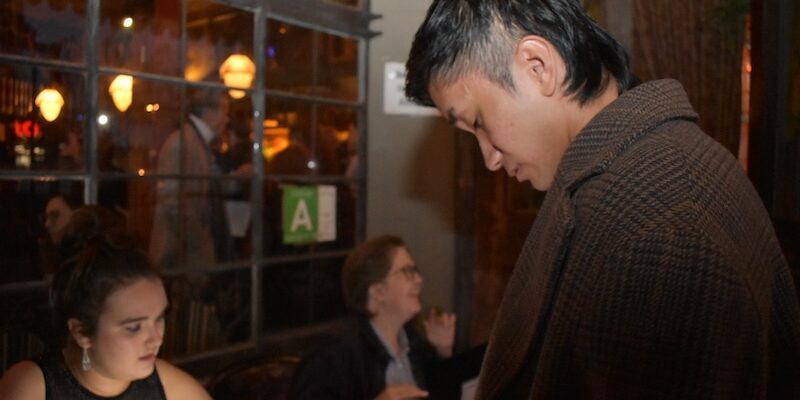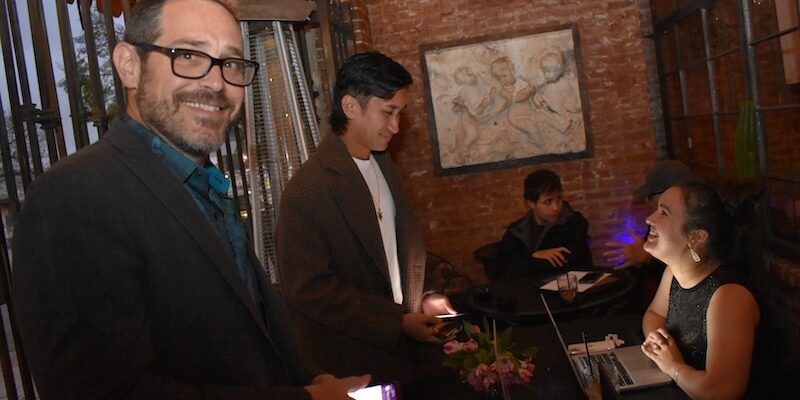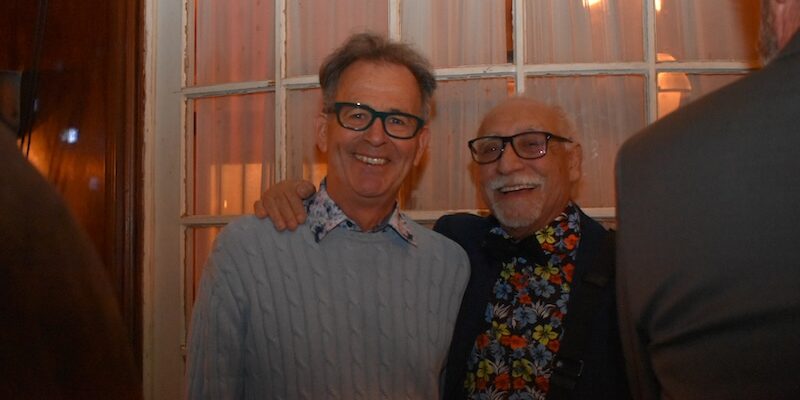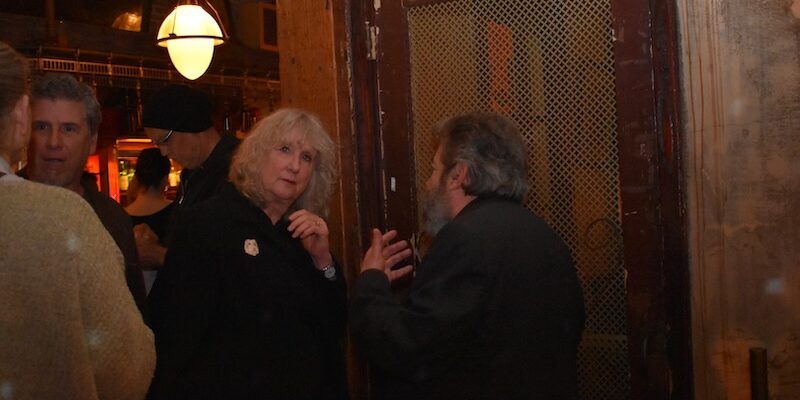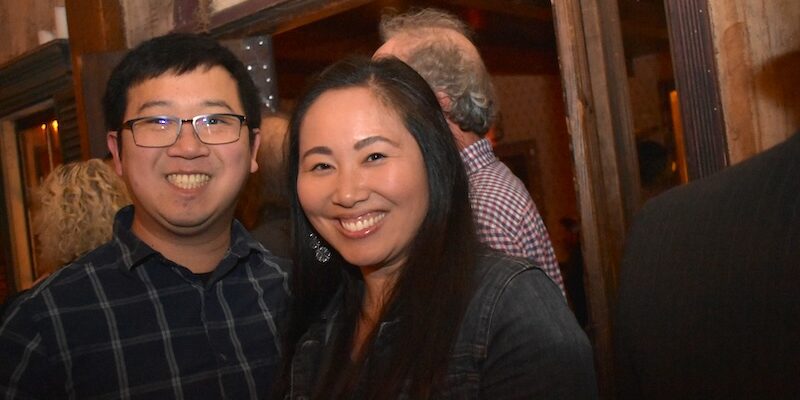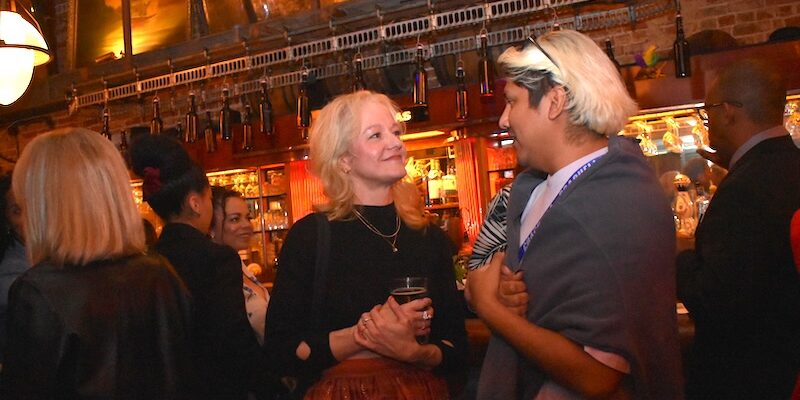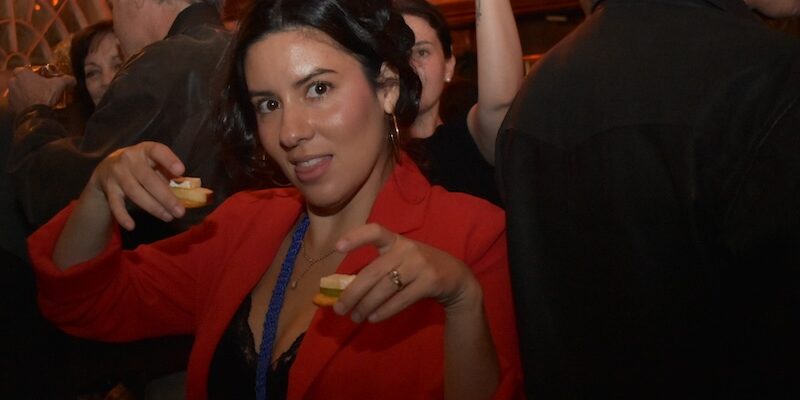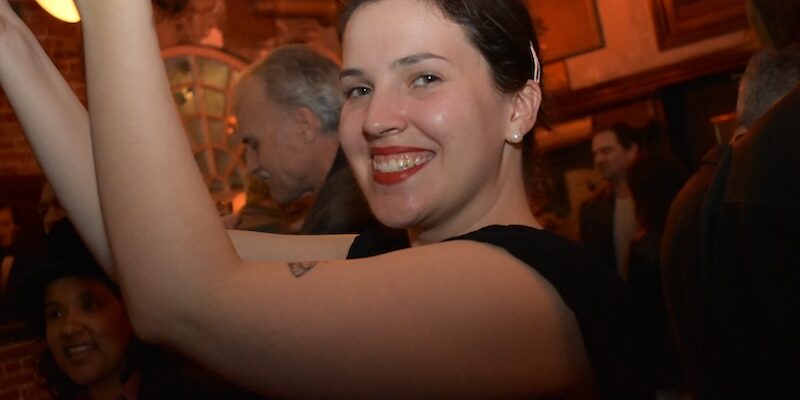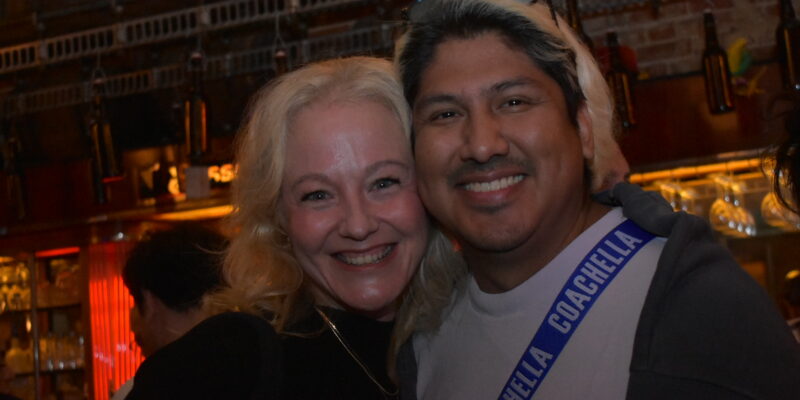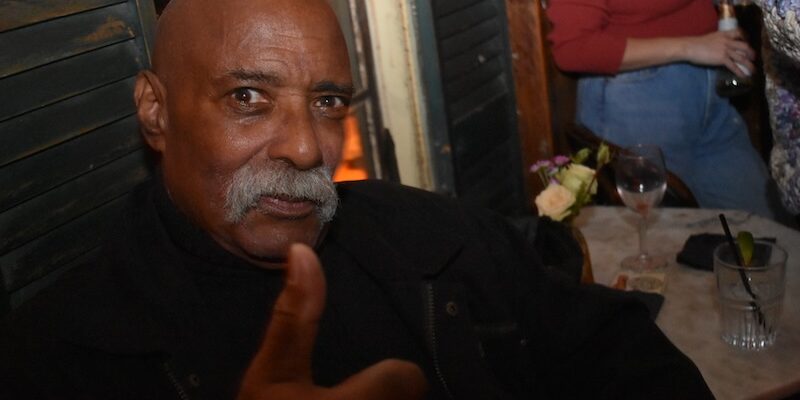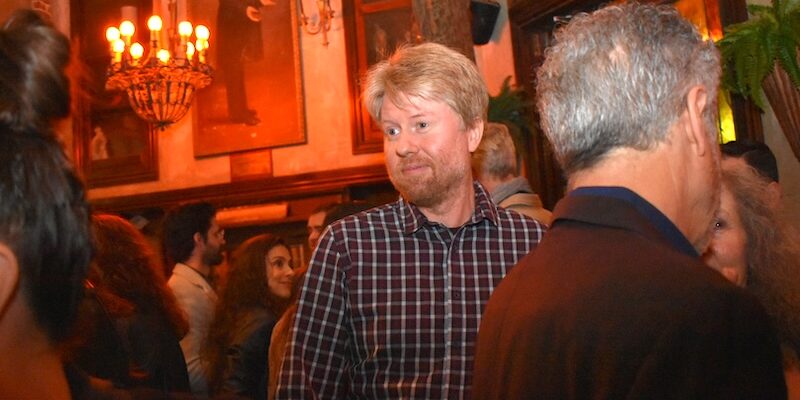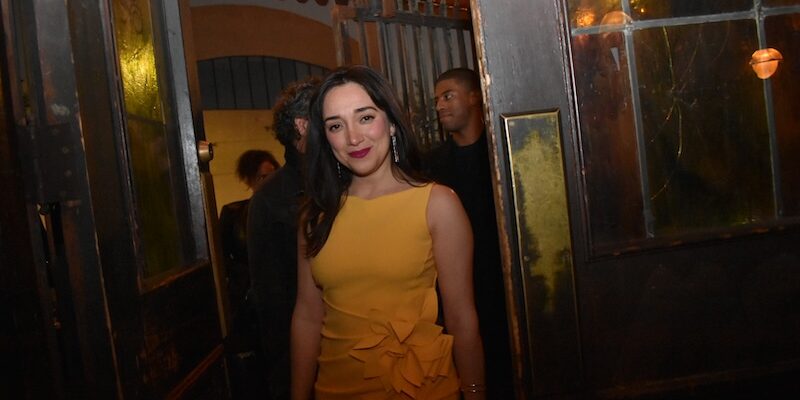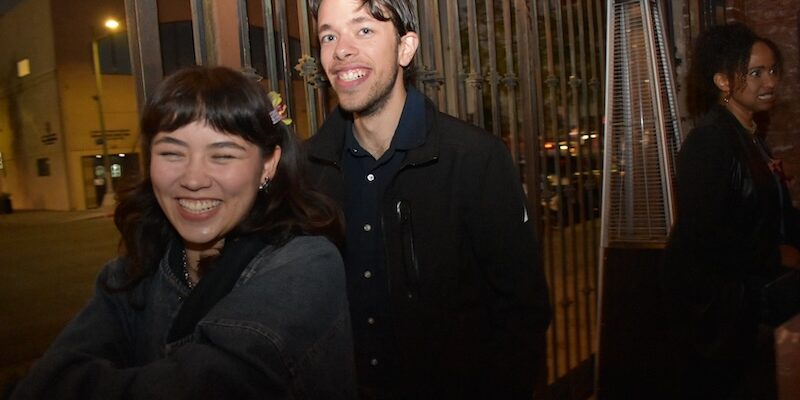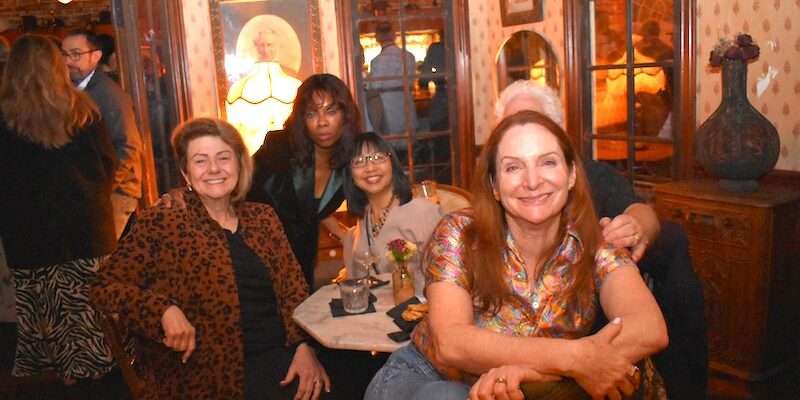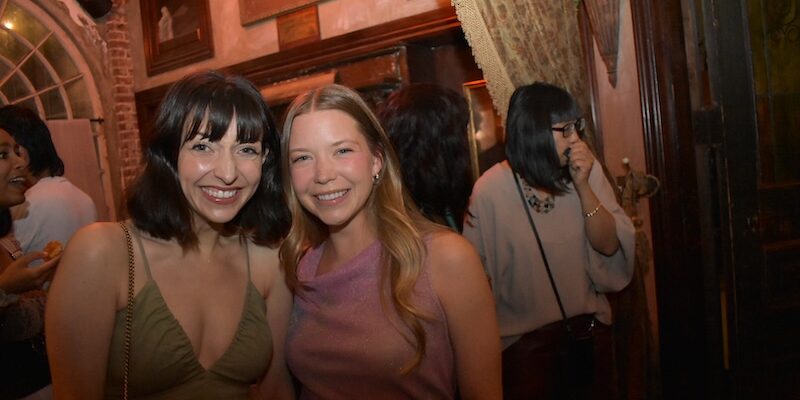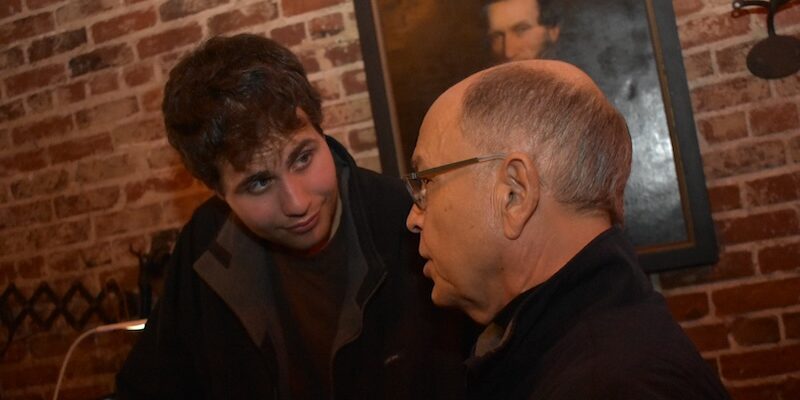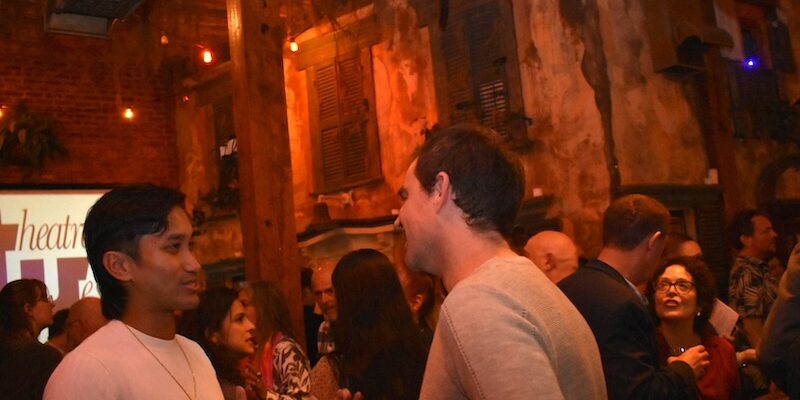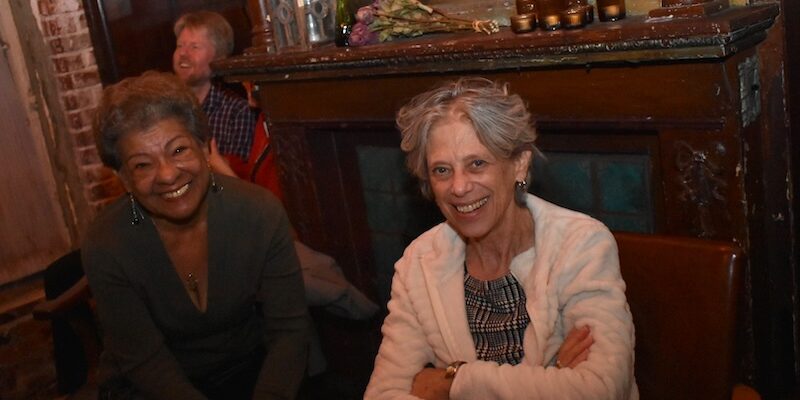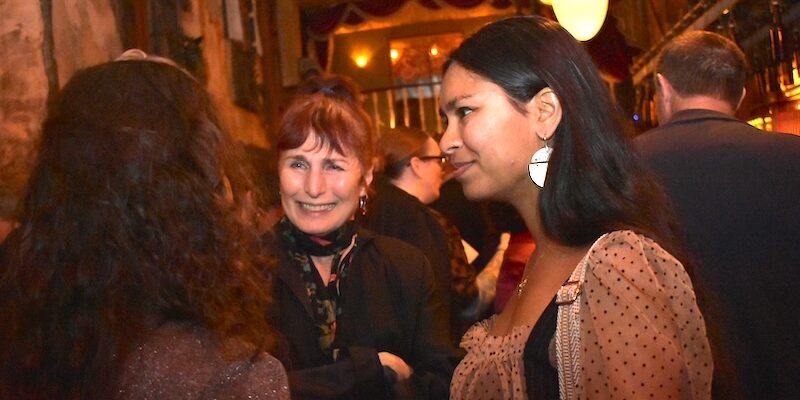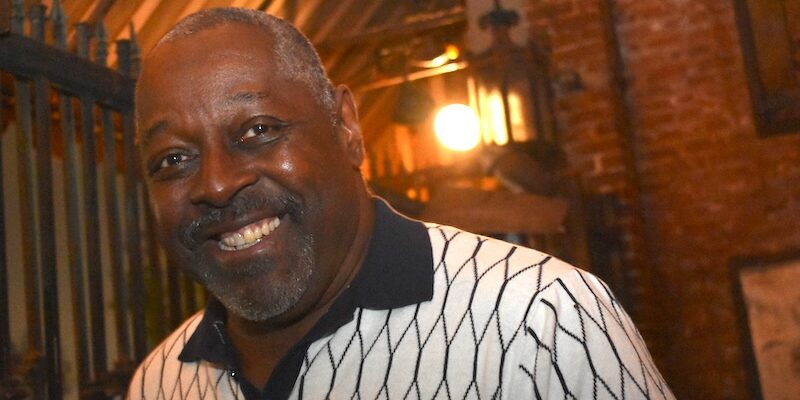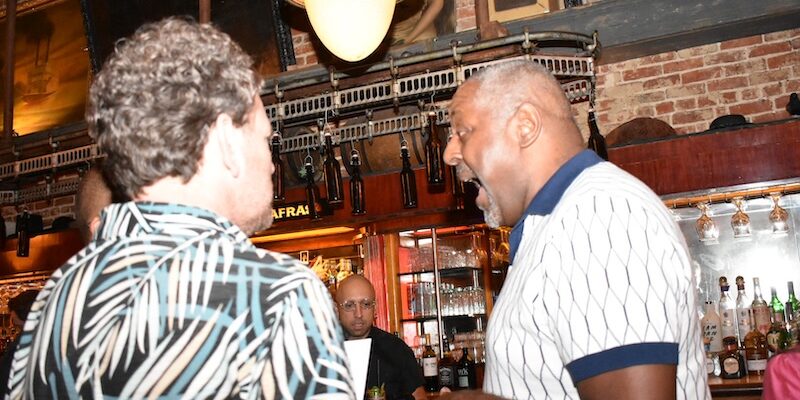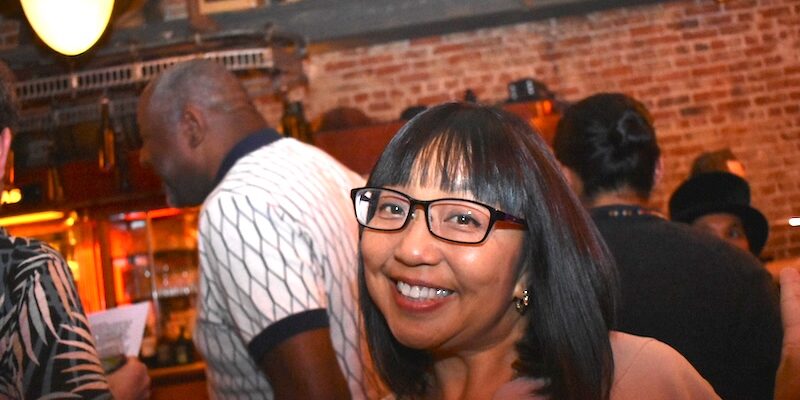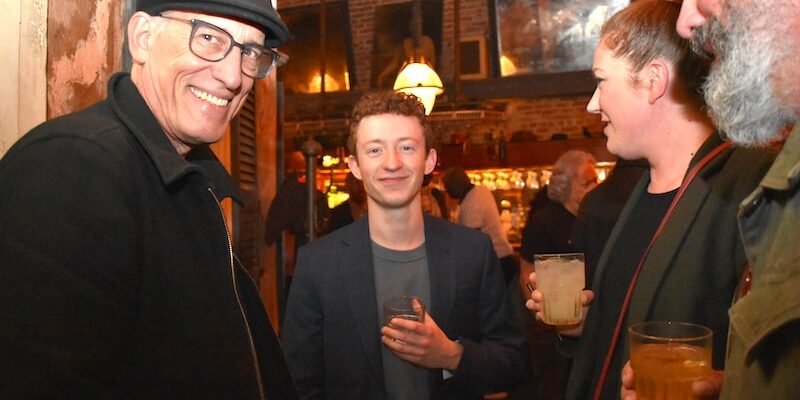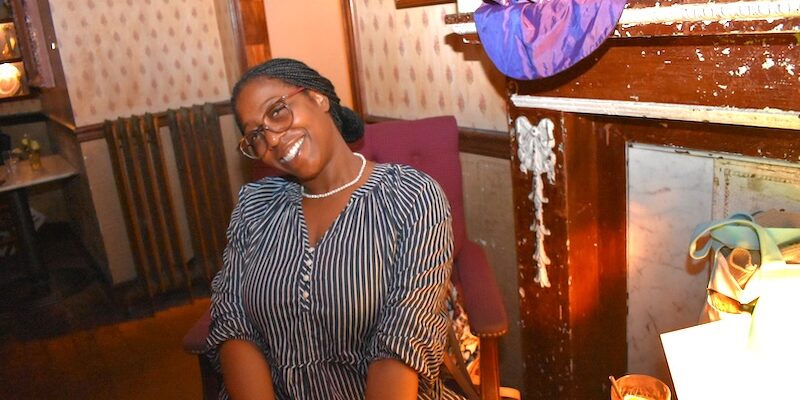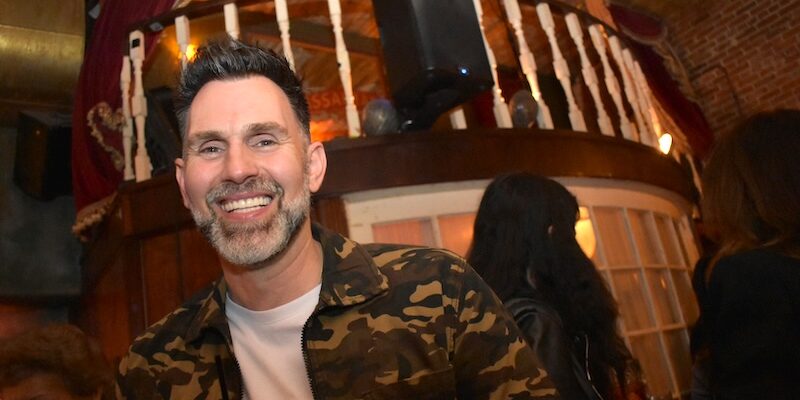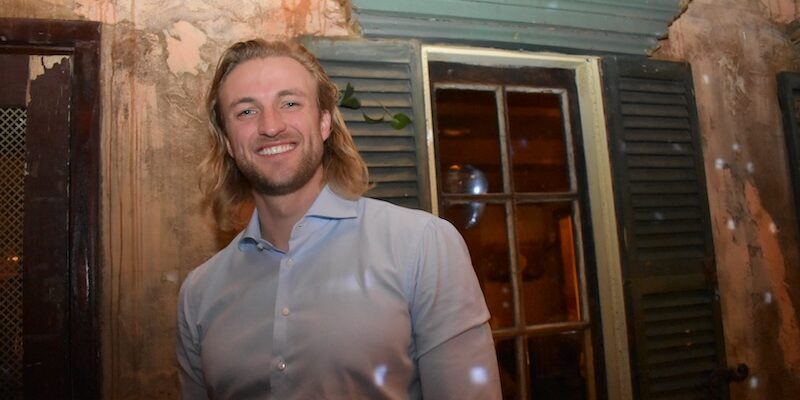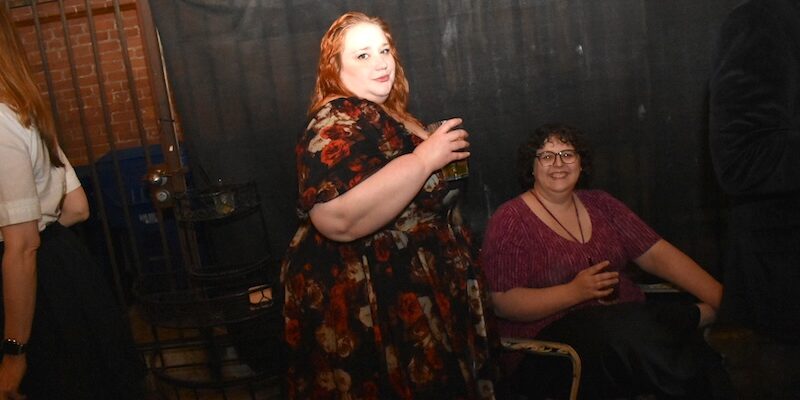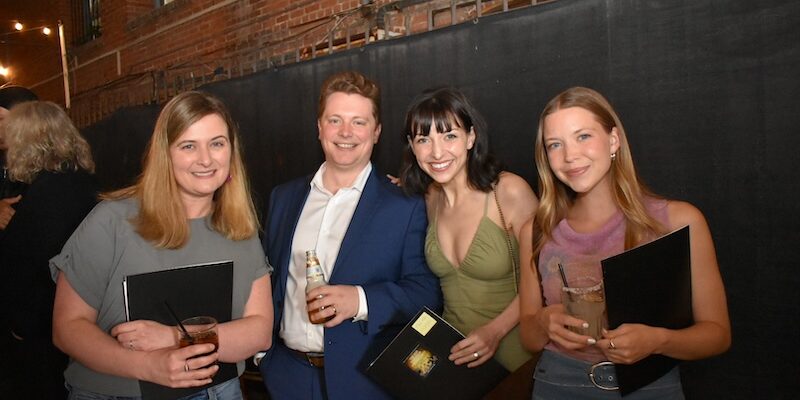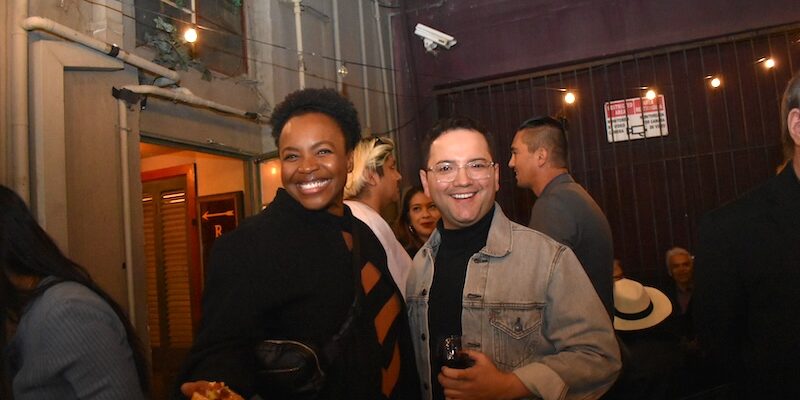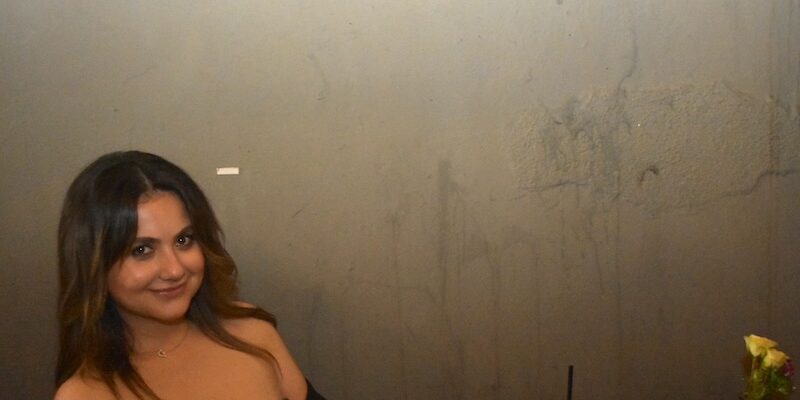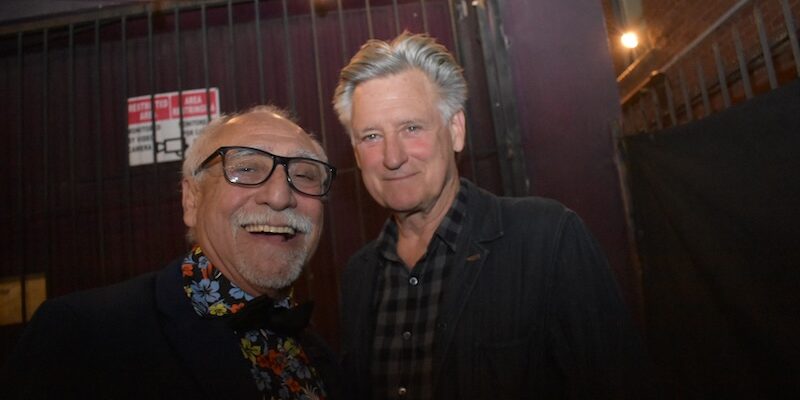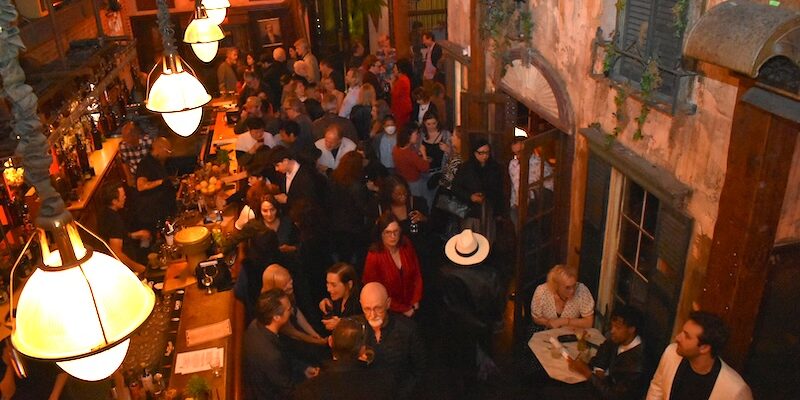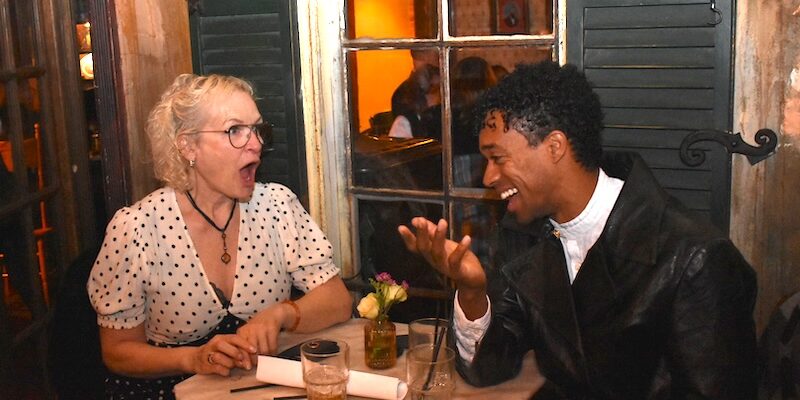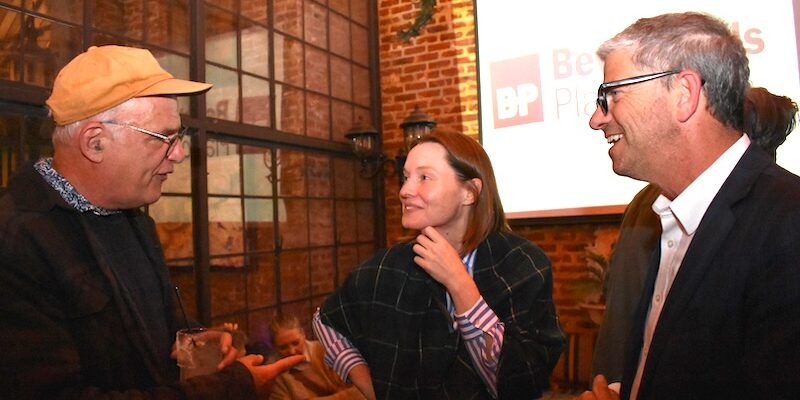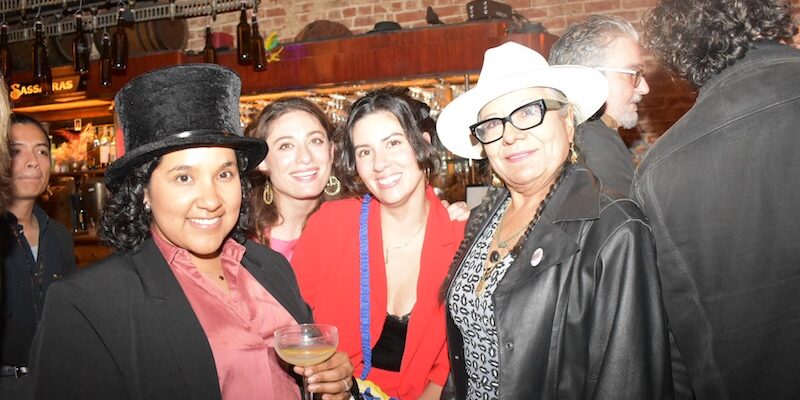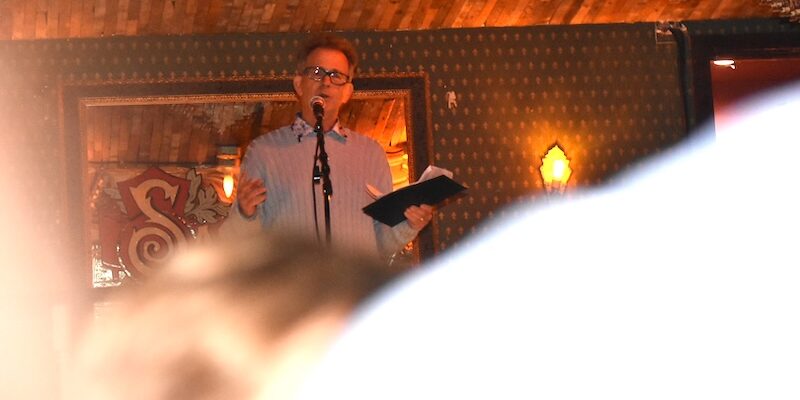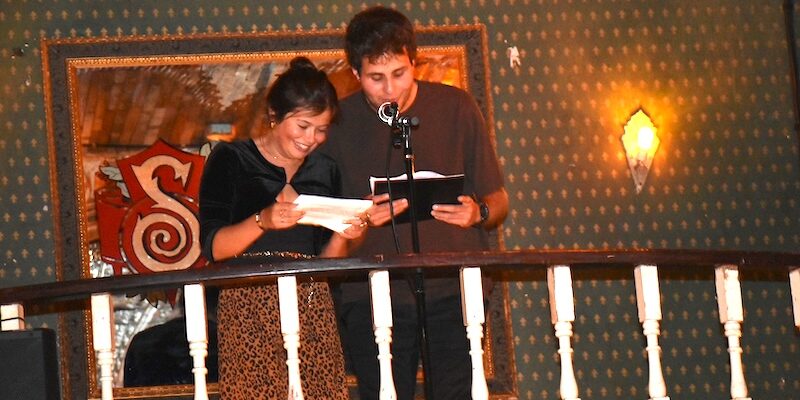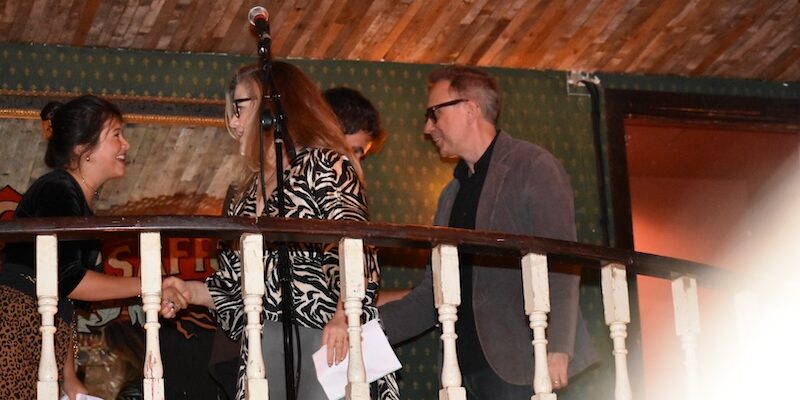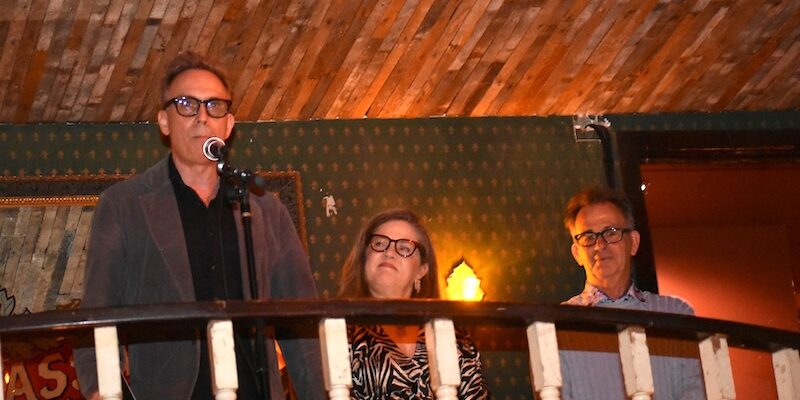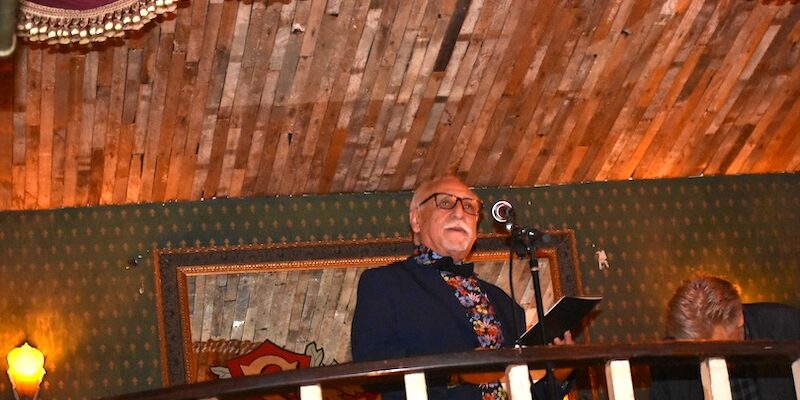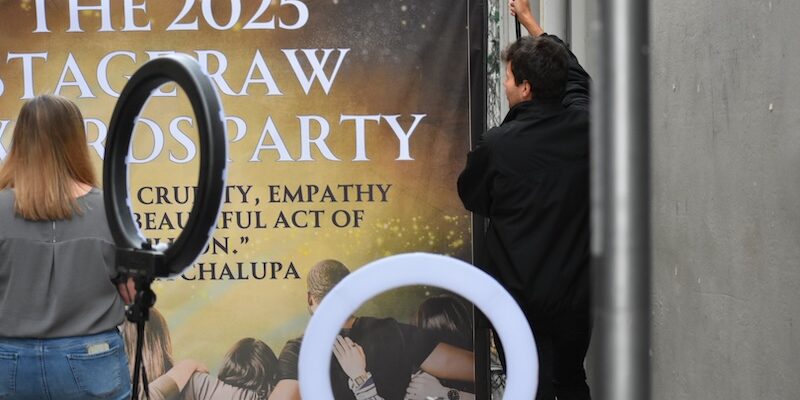
Les Kurkendaal-Barrett (Photo by Zev Rose Woolley)
Reviewed by F. Kathleen Foley
Davidson/Valentini Theatre at the Los Angeles LGBT Center’s Lily Tomlin/Jane Wagner Cultural
Arts Center
Through Sept. 24
RECOMMENDED
In his solo show The Real Black Swann: Confessions of America’s First Black Drag Queen, writer-performer Les Kurkendaal-Barrett tells us that the material available for his loosely fact-based play was scant.
Perhaps, in the months since first produced, Kurkendaal-Barrett’s play has sparked new interest in his real-life subject, William Dorsey Swann, because online articles about Swann have proliferated, including one in the Smithsonian. But whatever source material was available, and whatever earnest scholarship was going on behind the scenes when Kurkendaal-Barrett wrote his play, seems moot. This is not your typical biography but instead a blend of fact, fantasy, and humor that delivers a sincere but simplistic warning against the omnipresent nature of racism.
The play is structured as a dialectic between the present day Les (whom, we assume, is the playwright himself) and Swann, the gay Black man, born into slavery, who defiantly flouted the laws of his era and was repeatedly jailed for the offense of wearing female attire.
Les’s reference to the murder of George Floyd opens the action. As Les explains, ever since his painful early experiences of racism in his all-white Catholic grade school, he has buffered himself from his feelings, shoving down his anger over racist and homophobic encounters with an unusual mental exercise. When he feels the emotions “bubbling” up, he retreats into Glinda the Good’s pink bubble — a cocoon that keeps grim reality at bay. It’s a quirky metaphor that sets the tongue-in-cheek tone of the evening.
When Les undergoes an operation to remove a lesion from his thigh, he has a hallucinatory “dream” featuring Swann, referred to as The Queen henceforth. Taking Les to task for his escapism, the Queen pops Les’s pink bubble and takes him on a time-traveling tour of the late 1800s, when The Queen held sway in Washington D.C.’s gay underground, throwing fabulous costume balls for Black and White men alike.
The Queen’s refusal to knuckle under to the homophobic police, who would jail the Black attendees while immediately freeing the Whites, established her as an early Black activist, notable for her defiance and grit. So did her famous letter to then president Grover Cleveland requesting a pardon for her “crimes.” (Pardon was denied.)
In his dream, Les also recollects his own humiliating experiences with traffic cops, who pull him over for Driving While Black, and also recapitulates the tragedies of Trayvon Martin and Brianna Taylor, dismal warning signs of a nation lapsing into unregenerate racism.
Buoyed by Matt Richter’s lighting and Rebecca Kessin’s sound, both excellent, director Tom Trudgeon maximizes the potential of a postage stamp playing area, with only a few lapses in pacing.
Of course, by play’s end, Les has taken Swann’s lesson to heart and embraces activism, inviting the audience to join him in chanting “Black Lives Matter.” Kurkendaal-Barrett’s overlying message may seem self-evident, but then he is preaching to the choir, a sympathetic audience in an urban gay and lesbian center.
Overall, The Real Black Swann, while heartfelt, is a surface treatment of deeper social issues. However, the fact that we are able to watch it in a country where drag is banned and references to slavery are deleted from curricula makes for an important entertainment in and of itself. We Blue Staters have much to be thankful for, and Kurkendaal-Barrett’s exhortation to embrace activism is a timely reminder as we approach the next election cycle.
Davidson/Valentini Theatre at the Los Angeles LGBT Center’s Lily Tomlin/Jane Wagner Cultural Arts Center, 1125 N. McCadden Pl., Hlywd.; Fri.-Sat. and Mon., 8 p.m.; Sun., 7 p.m. (Sun. Sept. 17 at 3 p.m.); thru Sept 24. https://celebrationtheatre.org Running time: 70 minutes with no intermission.
